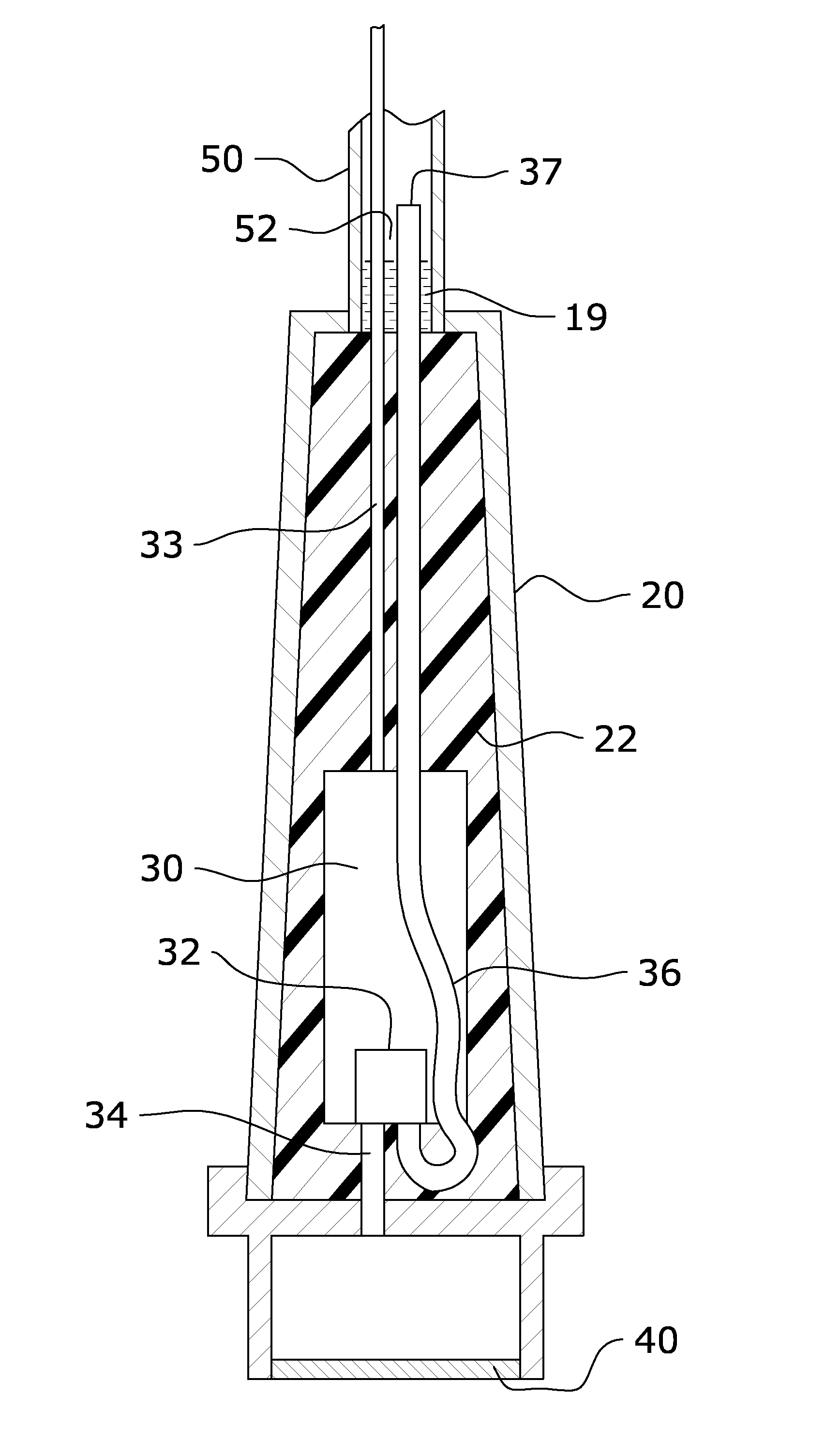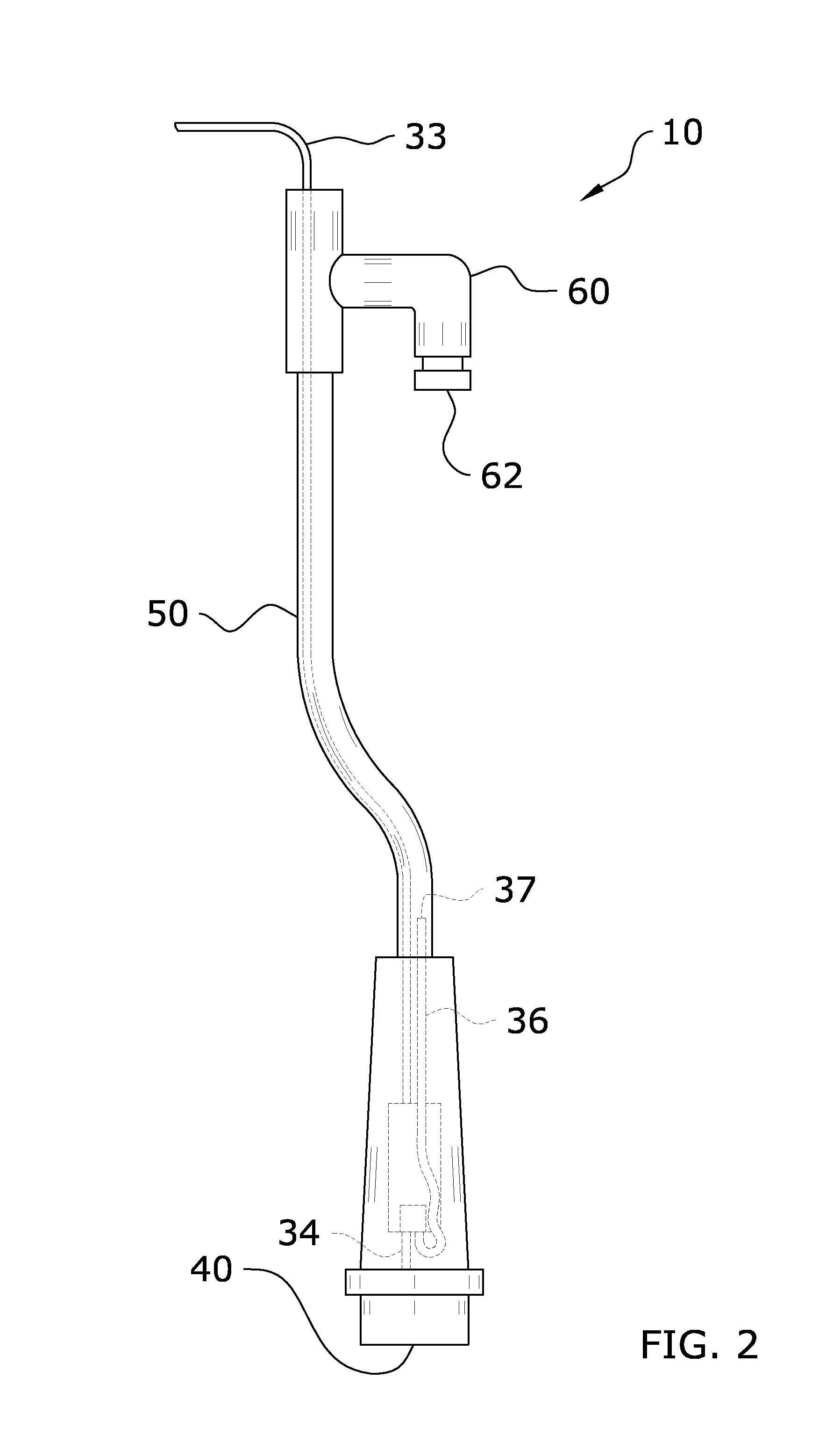Pressure sensor venting system
a pressure sensor and venting system technology, applied in liquid/fluent solid measurement, instruments, machines/engines, etc., can solve the problems of condensation, inconvenient venting, and inability to accurately measure the actual atmospheric pressure within the liquid container, so as to achieve efficient and accurate liquid level measurement
- Summary
- Abstract
- Description
- Claims
- Application Information
AI Technical Summary
Benefits of technology
Problems solved by technology
Method used
Image
Examples
Embodiment Construction
A. Overview.
[0017]Turning now descriptively to the drawings, in which similar reference characters denote similar elements throughout the several views, FIGS. 1 through 3b illustrate a pressure sensor venting system 10, which comprises a housing 20, a pressure transducer 32 within the housing 20, a diaphragm 40, a pressure passage 34 fluidly connecting the pressure transducer 32 and a pressurized liquid from the diaphragm 40, and a first vent tube 36 that is fluidly connected to the pressure transducer 32 opposite of the pressure passage 34. The distal end 37 of the first vent tube 36 extends outwardly from the housing 20 and extends a distance into a second vent tube 50. The second vent tube 50 is fluidly connected to liquid resistant vent 60 that is positioned within the interior space 14 of the liquid container 12 and above the liquid level 13.
B. Exemplary Liquid Container.
[0018]FIG. 1 illustrates an exemplary liquid container 12 comprised of a septic tank suitable for usage with...
PUM
 Login to View More
Login to View More Abstract
Description
Claims
Application Information
 Login to View More
Login to View More - R&D
- Intellectual Property
- Life Sciences
- Materials
- Tech Scout
- Unparalleled Data Quality
- Higher Quality Content
- 60% Fewer Hallucinations
Browse by: Latest US Patents, China's latest patents, Technical Efficacy Thesaurus, Application Domain, Technology Topic, Popular Technical Reports.
© 2025 PatSnap. All rights reserved.Legal|Privacy policy|Modern Slavery Act Transparency Statement|Sitemap|About US| Contact US: help@patsnap.com



